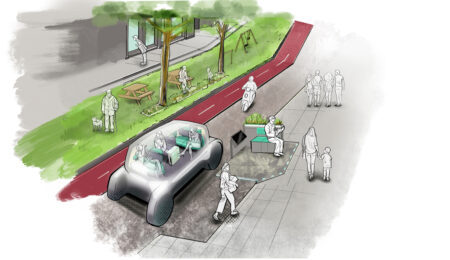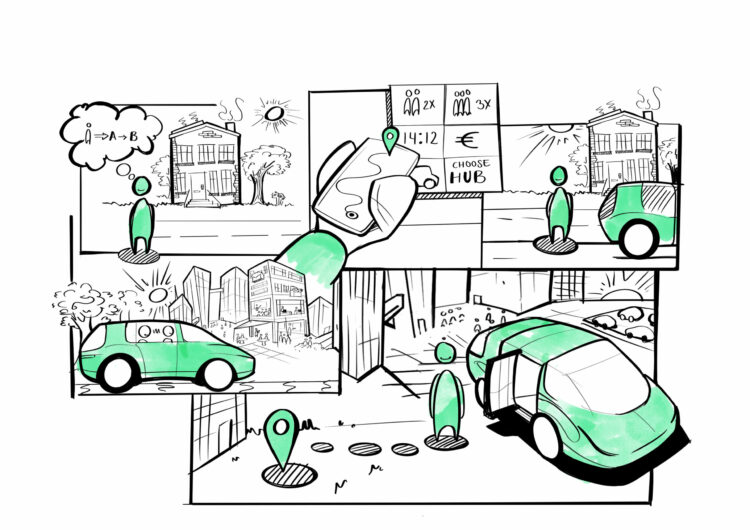A user-centered vision for the ecosystem of shared autonomous vehicles
Sep 2020 - ongoing
Creating a shared autonomous vehicle ecosystem that fits future human needs.
Our personal mobility systems will undergo a significant transformation with the emergence of electrified drivetrains, shared services, and autonomous technology (Sprei, 2018). We can already plan door-to-door transport, share various mobility modes, drive fully electric cars, and several vehicles can assist with some driving functions like automatic braking or parking.
The three-way-innovation – sharing, autonomous, electrified – is expected to be the most significant disruption (Sprei, 2018; Greenblatt and Shaheen, 2015; Walker and Johnson, 2016). These shared autonomous vehicles (SAV) could significantly impact our day-to-day lives. Governments and societies should be encouraged to engage and respond to these inevitable transportation disruptions pro-actively. If they do not, it could have an undesirable effect on cities and society in the long term. We cannot only rely on technology, creating a desirable disruption. It is necessary to steer this disruption in a desirable way (Sprei, 2018).
In steering this disruption, it is important to focus on the user and its needs in the future. As this disruption is highly complex, a holistic view is needed to design a desirable SAV- system. In this project, many different stakeholders’ views are considered, including future users, government, and involved companies.

The designed vision is a fully autonomous ride-sharing and car-sharing system that enables a flexible, accessible, private, and integrated service for users in 2040 within the Metropole Rotterdam The Hague. Users should feel in control, involved, supported, and at ease when using the service. The service is widely available in cities and rural areas and close to home by enabling hubs in every neighborhood.
Scenario based approach
The desired future vision is showcased through one of the three explored user scenarios. This scenario shows the complete story and how users experience the system. In the end, a lot of different users can use the system.
The quality of life in cities and rural areas will improve because extensive car infrastructure, such as parking spots, can be retrofitted into green and public recreational spaces. In rural areas, people can finally enjoy easy access to flexible mobility without buying a car. The quality of individual lives also improves as travel time can become spare time, and the SAVs can be used for meaningful activities with family and friends or alone. Thereby, the system is more sustainable than private car usage and is a helpful supplement to existing PT systems.

Three main elements that support this future vision:
– Different type of hubs to meet the vehicle
– Interior suitable for both private and social activities
– Digital service to plan, book, pay, and adjust your trip

Name: Evita Goettsch
Master: Design for Interaction
Supervisory Team: Dr. ir. Suzanne Hiemstra-van Mastrigt, Dr. Ir. Jasper van Kuijk
Partners: MRDH
Graduation project